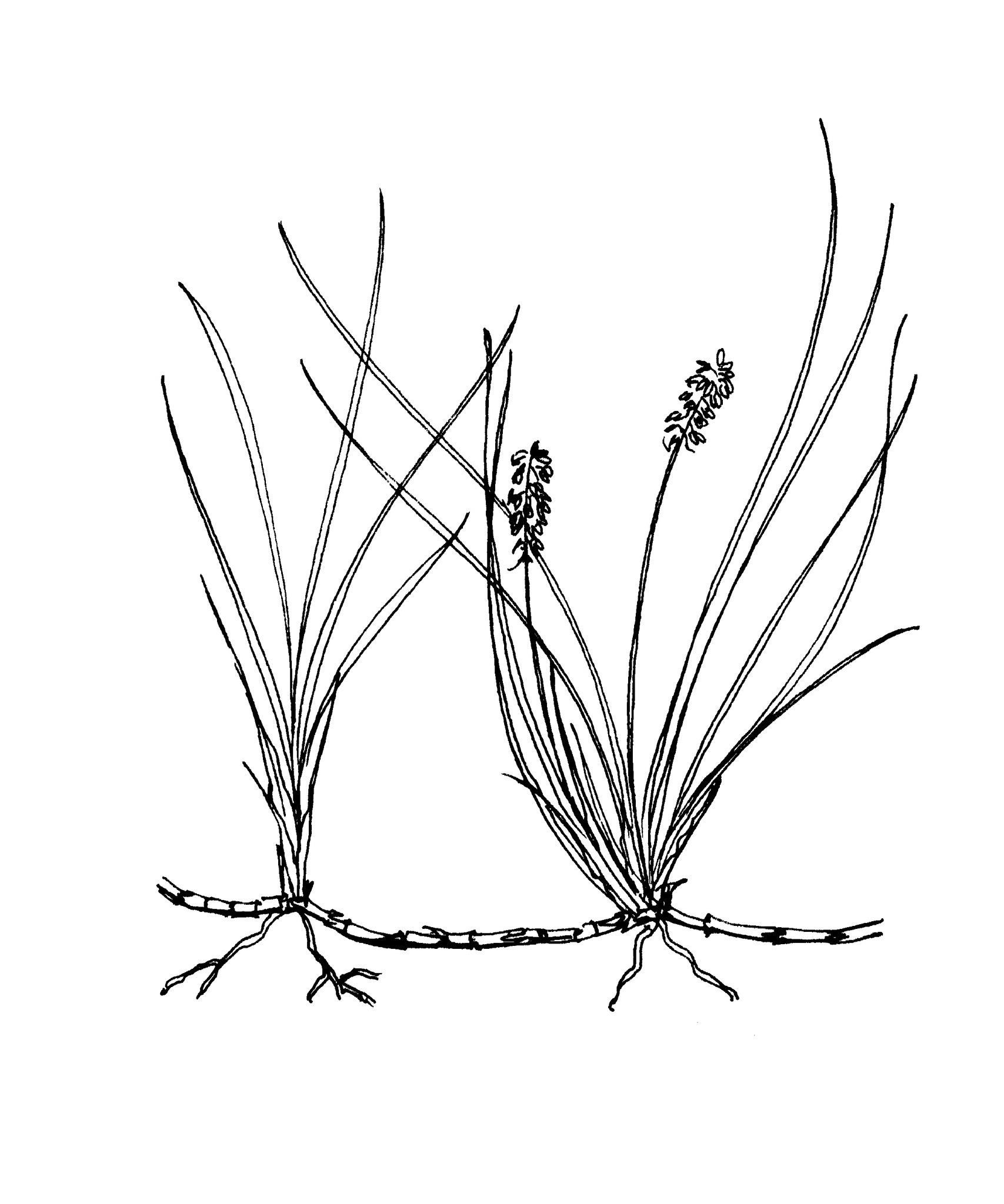
Greek ophio – snake-like, pogon – bearded, thought to be a reference to the inflorescence.
Perennial evergreen, short-stemmed rhizomatous herbs with sometimes tuberous roots. Leaves several, linear. Flowers cup-shaped, pendant, radially symmetrical, stalked, stalks articulated. Inflorescence a many-flowered panicle. Tepals 6, fused basally. Stamens 6, attached to tepal bases. Ovary half-inferior. Fruit rupturing to produce a cluster of fleshy seeds resembling berries. Seeds ovoid, fleshy, berry-like, blue-black.
Grown mostly as a border plant for the grassy foliage. Two species cultivated in southern Australia.
About 65 species from SE Asia to Himalayas and Japan.
Flowers mostly drooping; ovary semi-inferior with the perianth segments apparently attached to at least part of the ovary; anthers lanceolate (pointed at the tip); flower stalks often quite long (1 cm or more). cf. Liriope.
Hume (1961).
Source: (2005). Convallariaceae. In: . Horticultural Flora of South-eastern Australia. Volume 5. Flowering plants. Monocotyledons. The identification of garden and cultivated plants. University of New South Wales Press.
